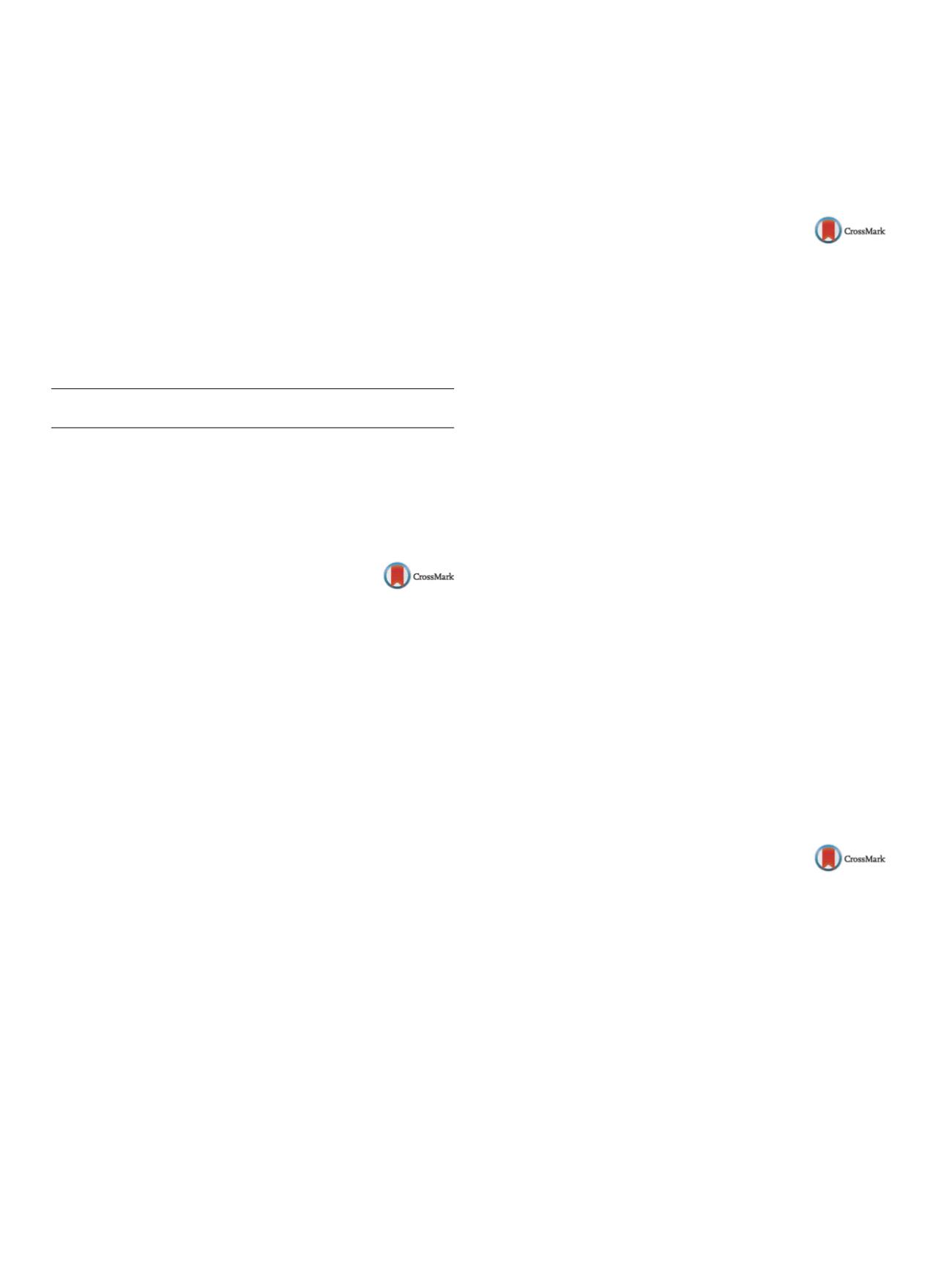

S564
25th European Congress of Psychiatry / European Psychiatry 41S (2017) S521–S582
contains two general adult wards (42 beds), one IPCU (12 beds) and
two Elderly wards (40 beds).
Methods
Referral data was sourced across 4 consecutivemonths:
April–July 2015 (initial audit) and October 2015–January 2016 (re-
audit). These included all referrals from A&E to Psychiatry. Times
were calculated for the 4 subprocesses listed in
Table 1 below.
Conclusion/discussion
Following the initial audit, interventions
such as training A&E staff to better manage psychiatric patients
and encourage earlier referrals, led to a positive response in the
re-audit (Subprocess 1). Breach rates reduced to 28% (from 35%)
on re-audit. Less breaches (81% compared to 88%) were referred
after 2-hours by A&E. Overall, the breach rates have reduced and
they are less attributable to the A&E referring patients late. The out-
come of patients leaving A&E without being seen by a psychiatrist
was unknown – adverse outcomes would strengthen the debate to
enforce the 4-hour window.
Table 1
Initial audit = 222 referrals (35% breach rate)
Re-Audit = 348 referrals (28% breach rate)
Disclosure of interest
The author has not supplied his/her decla-
ration of competing interest.
http://dx.doi.org/10.1016/j.eurpsy.2017.01.821EV0492
Neuroleptic malignant syndrome:
Case report and literature review
R. Martín Gutierrez
1 ,∗
, R. Medina Blanco
1, P. Suarez Pinilla
1,
R. Landera Rodriguez
1, M. Juncal Ruiz
1,
I. Madrazo del Río Hortega
1, M. Gómez Revuelta
1,
O. Porta Olivares
1, J. González Gómez
1, J. Vázquez Bourgon
1,
R. Hernando Fernández
21
Hospital Universitario Marques De Valdecilla, Psychiatry,
Santander, Spain
2
Hospital Universitario Marques De Valdecilla, General Practicioner,
Santander, Spain
∗
Corresponding author.
Introduction
Neuroleptic malignant syndrome (NMS) is an
uncommon but potentially fatal adverse effect of neuroleptic, both
classic and atypical drugs.
Objective
To review the incidence, clinical characteristics, diag-
nosis and treatment of NMS.
Aim
We have described the case of a man of 32 years of age
diagnosed with bipolar disorder treated with lithium. He pre-
cised high-dose corticosteroids after having tonsillitis. Then, he
presented manic decompensation requiring neuroleptic treatment
(oral risperidone). After 72 hours, he presented an episode char-
acterized by muscular rigidity, fever, altered mental status and
autonomic dysfunction. Life support measures and suspension of
neuroleptic treatment were required.
Methods
A literature review of the NMS was performed using the
PubMed database.
Results
The frequency of NMS ranges from 0.02 to 2.4%. The
pathophysiology is not clearly understood but the blockade of
dopamine receptors seems to be the central mechanism. Some
of the main risk factors described are: being a young adult, the
concomitant use of lithium and metabolic causes, among others.
NMS occurs most often during the first week of treatment or after
increasing the dosage of the neuroleptic medication. Some issues of
NMS are those relatedwithdiagnosis, treatment and reintroduction
of antipsychotic treatment or not.
Conclusions
NMS canbe difficult todiagnose due to the variability
in the clinical symptoms and presentation. Because of it diagnosis
is of exclusion, clinicians should always take it into consideration
when a patient is treating with neuroleptic, especially when the
dosage has been recently increased. NMS is a clinical emergency.
Disclosure of interest
The authors have not supplied their decla-
ration of competing interest.
http://dx.doi.org/10.1016/j.eurpsy.2017.01.822EV0493
The correlation between mood
disorders and suicide attempts for the
period 2013–2015 at “Mother Teresa”
hospital center, Fatbardha Myslimaj,
Psychiatrist, Mirela Gokaj, Deana
Rama
F. Myslimaj
∗
, M. Gokaj , D. Rama
Mother Teresa Hospital, Psychiatry Adult, Tirana, Albania
∗
Corresponding author.
Background
People, who have tried to commit self-injurers or
suicidal attempts, refer symptomatic presence of disorders of
humor and numerous problems social as factors precipitant to sui-
cidal thoughts and actions. It is important recognition of the signs
of suicide and self-inflicting behavior to help prevent suicide.
Materials and methods
The study includes a period of 3 years of
cases hospitalized in the psychiatric clinic UHC, since 2013–2015.
The data are taken from the records of admissions at the Psychiatric
Clinic at the University Hospital Center. Results are grouped and
studied issued by mood disorders, sex, age, place of residence and
social status.
Results
The influence of mood disorders is recently estimated
very important in causing suicide attempts compared with other
mental illnesses, similar values with contemporary literature.
Conclusions
The majority of suicide attempts do not result in
death. Many of these efforts aremade in a way that makes salvation
possible. These efforts are often a cry for help. Suicide is a social phe-
nomenon different cognitive aspect such as ethical, philosophical,
legal, psychiatric, etc. Employees of psycho-social care should be
informed about this phenomenon and finding the diagnosis, pre-
vention and treatment of suicidal attempts by persons at risk of
suicide.
Keywords
Suicide attempt; Mood disorder; Self-infliction
Disclosure of interest
The authors have not supplied their decla-
ration of competing interest.
http://dx.doi.org/10.1016/j.eurpsy.2017.01.823EV0494
Peculiarities of providing care in
various emergencies
S. Shport
V.P. National Research Center for Social and Forensic Psychiatry,
administration, Moscow, Russia
Air crashes
Attention is focused on providing care to the relatives
(identifying the bodies of the perished, talking to investigators, fill-
ing out the requisite documentation, etc.), resolving social issues
(organizing funerals, informing various services of what had hap-
pened, etc.).
Fires
Special attention is paid to the victims with burns at the
inpatient facilities of hospitals.
Terrorist acts
Provision of care depends on the duration of the
emergency and the number of people involved; in the case of a
continual stress, in the phase of isolation themedical-psychological
care is provided to victims’ relatives. At later stages–it is provided
to the victims and their relatives.
Natural disasters
Are of a special nature, as they are always sud-
den and there exists a threat that a great number of people may
become victims.
Organizational measures in the acute period of an emergency:


















